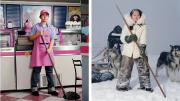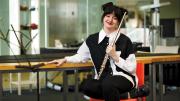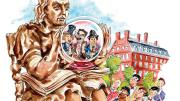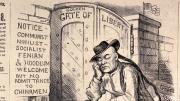Mildred Thompson’s prints, at the New Britain Museum of American Art through November 27, offer abstract, yet personal, depictions of scientific phenomena. Particles and waves, darts, slashes, and orbs float amid careful coloration. They seem to transmit a fluid positive energy, like a salve to the more in-your-face, Instagrammable pop art stealing attention these days. Yet they are not simplistic. Thompson produced prints, paintings, and sculptures from the 1950s to the early 2000s, driven to visually express what’s unseen. Elements of math and music, say, of physics and astronomy or, as she put it: “what goes on beneath the earth and things of the atmosphere.” The museum’s show Mildred Thompson: Cosmic Flow explores her comprehensive vision through prints made with sheet-glass (vitreographs) produced in 1993 while in residency at the Littleton Studios in North Carolina. By then she had returned from stints living in Germany and France, and was based in Atlanta, Georgia, also teaching and writing about art. Throughout her career, she shunned commercial trends and transcended “prevailing narratives prescribed by her generation, race, and gender,” her estate’s website notes. Rather, “my work,” she wrote, “is a continuous search for understanding. It is an expression of purpose and reflects a personal interpretation of the universe.”
Interpreting the Universe
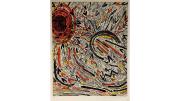
Helio-Centric III, 1993
Painting ©Mildred Thompson/Courtesy of the New Britain Museum of American Art
You might also like
Rendering Dreams in Art
South Korean artist’s socially themed photographs at the Peabody Essex Museum
The Shape of Sound
Jessica Shand blends math and music.
Faith through Film
The “Accidental Talmudist” on making Jewish movies
Most popular
Explore More From Current Issue
Short Headlines from Harvard's History
Seniors’ uncertain future c. 1940, Harvard Law Review news, and more
Chinese Immigrants in Early America
Michael Luo ’98 on the first great wave of immigration—and of nativist anti-immigrant reaction
Why Men Are Falling Behind in Education, Employment, and Health
What to do as men and boys fall behind
